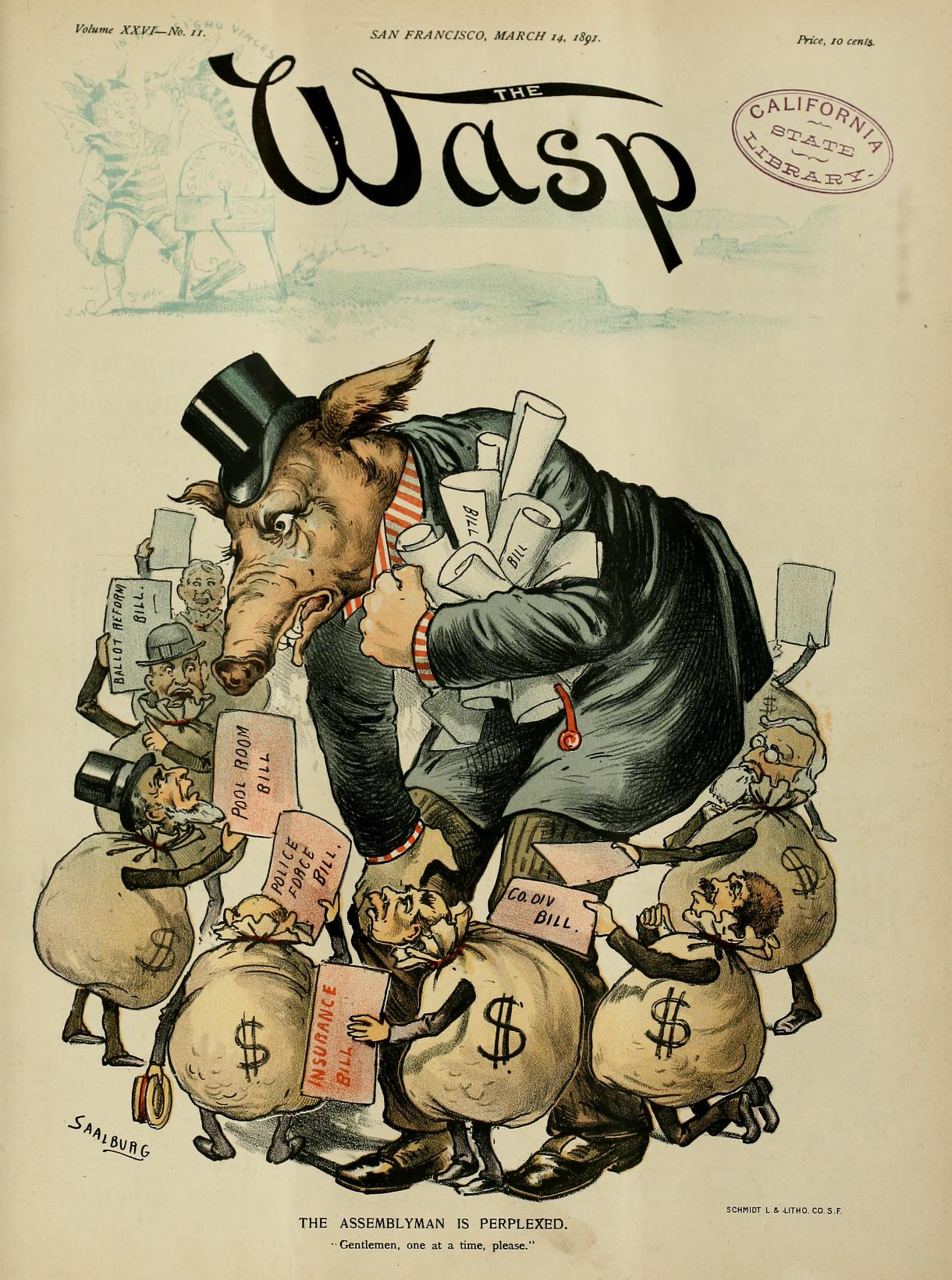|
Advocacy Evaluation
Advocacy evaluation, also called public policy advocacy design, monitoring, and evaluation, evaluates the progress or outcomes of advocacy, such as changes in public policy. Advocacy evaluators seek to understand the extent to which advocacy efforts have contributed to the advancement of a goal or policy. They do this in order to learn what works, what does not, and what works better in order to achieve advocacy goals and improve future efforts. Advocacy evaluation is different from policy analysis, which generally looks at the results of the policy, or mainstream program evaluation, which assesses whether programs or direct services have been successful. Advocacy strives to influence a program or policy either directly or indirectly; therefore, the influence is being evaluated, rather than the results of that influence. Goals of advocacy (dependent variables) In order to evaluate something, one must know the goals of the program/activity, in this case - advocacy efforts. Polic ... [...More Info...] [...Related Items...] OR: [Wikipedia] [Google] [Baidu] |
Diagram Policy Advocacy Evaluation Vs Policy Analysis Evaluation - Created By Grant Ennis In December 2011
A diagram is a symbolic representation of information using visualization techniques. Diagrams have been used since prehistoric times on walls of caves, but became more prevalent during the Enlightenment. Sometimes, the technique uses a three-dimensional visualization which is then projected onto a two-dimensional surface. The word ''graph'' is sometimes used as a synonym for diagram. Overview The term "diagram" in its commonly used sense can have a general or specific meaning: * ''visual information device'' : Like the term " illustration", "diagram" is used as a collective term standing for the whole class of technical genres, including graphs, technical drawings and tables. * ''specific kind of visual display'' : This is the genre that shows qualitative data with shapes that are connected by lines, arrows, or other visual links. In science the term is used in both ways. For example, Anderson (1997) stated more generally: "diagrams are pictorial, yet abstract, represen ... [...More Info...] [...Related Items...] OR: [Wikipedia] [Google] [Baidu] |
Astroturfing
Astroturfing is the practice of masking the sponsors of a message or organization (e.g., political, advertising, religious or public relations) to make it appear as though it originates from and is supported by grassroots participants. It is a practice intended to give the statements or organizations credibility by withholding information about the source's financial connection. The term ''astroturfing'' is derived from AstroTurf, a brand of synthetic carpeting designed to resemble natural grass, as a play on the word "grassroots". The implication behind the use of the term is that instead of a "true" or "natural" grassroots effort behind the activity in question, there is a "fake" or "artificial" appearance of support. Definition In political science, it is defined as the process of seeking electoral victory or legislative relief for grievances by helping political actors find and mobilize a sympathetic public, and is designed to create the image of public consensus where ther ... [...More Info...] [...Related Items...] OR: [Wikipedia] [Google] [Baidu] |
Public Administration
Public Administration (a form of governance) or Public Policy and Administration (an academic discipline) is the implementation of public policy, administration of government establishment (public governance), management of non-profit establishment ( nonprofit governance), and also a subfield of political science taught in public policy schools that studies this implementation and prepares civil servants, especially those in administrative positions for working in the public sector, voluntary sector, some industries in the private sector dealing with government relations and regulatory affairs, and those working as think tank researchers. As a "field of inquiry with a diverse scope" whose fundamental goal is to "advance management and policies so that government can function." Some of the various definitions which have been offered for the term are: "the management of public programs"; the "translation of politics into the reality that citizens see every day";Kettl, D ... [...More Info...] [...Related Items...] OR: [Wikipedia] [Google] [Baidu] |
Public Policy Research
In public relations and communication science, publics are groups of individual people, and the public (a.k.a. the general public) is the totality of such groupings. This is a different concept to the sociological concept of the ''Öffentlichkeit'' or public sphere. The concept of a public has also been defined in political science, psychology, marketing, and advertising. In public relations and communication science, it is one of the more ambiguous concepts in the field. Although it has definitions in the theory of the field that have been formulated from the early 20th century onwards, and suffered more recent years from being blurred, as a result of conflation of the idea of a public with the notions of audience, market segment, community, constituency, and stakeholder. Etymology and definitions The name "public" originates with the Latin '' publicus'' (also '' poplicus''), from ''populus'', to the English word 'populace', and in general denotes some mass population ("the p ... [...More Info...] [...Related Items...] OR: [Wikipedia] [Google] [Baidu] |
Management Cybernetics
Management cybernetics is concerned with the application of cybernetics to management and organizations. "Management cybernetics" was first introduced by Stafford Beer in the late 1950s and introduces the various mechanisms of self-regulation applied by and to organizational settings, as seen through a cybernetics perspective. Beer developed the theory through a combination of practical applications and a series of influential books. The practical applications involved steel production, publishing and operations research in a large variety of different industries. Some consider that the full flowering of management cybernetics is represented in Beer's books. However, learning continues (see below). Research into operations As practiced by Beer, research into operations involved multidisciplinary teams seeking practical assistance for difficult managerial issues. It often involved the development of models borrowed from basic sciences and put into an isomorphic relationships with ... [...More Info...] [...Related Items...] OR: [Wikipedia] [Google] [Baidu] |
Policy Analysis
Policy analysis is a technique used in the public administration sub-field of political science to enable civil servants, nonprofit organizations, and others to examine and evaluate the available options to implement the goals of laws and elected officials. The process is also used in the administration of large organizations with complex policies. It has been defined as the process of "determining which of various policies will achieve a given set of goals in light of the relations between the policies and the goals." Policy analysis can be divided into two major fields: * Analysis existing policy, which is analytical and descriptive – it attempts to explain policies and their development * Analysis new policy, which is prescriptive – it is involved with formulating policies and proposals (for example: to improve social welfare) The areas of interest and the purpose of analysis determine what types of analysis are conducted. A combination of two kinds of policy analyses ... [...More Info...] [...Related Items...] OR: [Wikipedia] [Google] [Baidu] |
Evidence-based Policy
Evidence-based policy is an idea in public policy proposing that policy decisions should be based on, or informed by, rigorously established objective evidence. The implied contrast is with policymaking based on ideology, 'common sense,' anecdotes, and intuitions. It is the government equivalent of the effective altruism movement. Evidence-based policy uses a thorough research method, such as randomized controlled trials (RCT). Good data, analytical skills, and political support to the use of scientific information are typically seen as the crucial elements of an evidence-based approach. Some have promoted particular types of evidence as 'best' for policymakers to consider, including scientifically rigorous evaluation studies such as randomized controlled trials to identify programs and practices capable of improving policy-relevant outcomes. However, some areas of policy-relevant knowledge may not be well served by quantitative research. This has led to a debate about the ty ... [...More Info...] [...Related Items...] OR: [Wikipedia] [Google] [Baidu] |
Advocacy
Advocacy is an activity by an individual or group that aims to influence decisions within political, economic, and social institutions. Advocacy includes activities and publications to influence public policy, laws and budgets by using facts, their relationships, the media, and messaging to educate government officials and the public. Advocacy can include many activities that a person or organization undertakes, including media campaigns, public speaking, commissioning and publishing research. Lobbying (often by lobby groups) is a form of advocacy where a direct approach is made to legislators on a specific issue or specific piece of legislation. Research has started to address how advocacy groups in the United States and Canada are using social media to facilitate civic engagement and collective action. Forms There are several forms of advocacy, each representing a different approach in a way to initiate changes in the society. One of the most popular forms is social ... [...More Info...] [...Related Items...] OR: [Wikipedia] [Google] [Baidu] |
Activism
Activism (or Advocacy) consists of efforts to promote, impede, direct or intervene in social, political, economic or environmental reform with the desire to make changes in society toward a perceived greater good. Forms of activism range from mandate building in a community (including writing letters to newspapers), petitioning elected officials, running or contributing to a political campaign, preferential patronage (or boycott) of businesses, and demonstrative forms of activism like rallies, street marches, strikes, sit-ins, or hunger strikes. Activism may be performed on a day-to-day basis in a wide variety of ways, including through the creation of art ( artivism), computer hacking ( hacktivism), or simply in how one chooses to spend their money ( economic activism). For example, the refusal to buy clothes or other merchandise from a company as a protest against the exploitation of workers by that company could be considered an expression of activism. However, the mo ... [...More Info...] [...Related Items...] OR: [Wikipedia] [Google] [Baidu] |
Program Evaluation
Program evaluation is a systematic method for collecting, analyzing, and using information to answer questions about projects, policies and programs, particularly about their effectiveness and efficiency. In both the public and private sectors, stakeholders often want to know whether the programs they are funding, implementing, voting for, receiving or objecting to are producing the intended effect. While ''program evaluation'' first focuses around this definition, important considerations often include how much the program costs per participant, how the program could be improved, whether the program is worthwhile, whether there are better alternatives, if there are ''unintended'' outcomes, and whether the program goals are appropriate and useful. Evaluators help to answer these questions, but the best way to answer the questions is for the evaluation to be a joint project between evaluators and stakeholders. The process of evaluation is considered to be a relatively recent phenom ... [...More Info...] [...Related Items...] OR: [Wikipedia] [Google] [Baidu] |
Grassroots Lobbying
Grassroots lobbying (also indirect lobbying) is lobbying with the intention of reaching the legislature and making a difference in the decision-making process. Grassroots lobbying is an approach that separates itself from direct lobbying through the act of asking the ''general public'' to contact legislators and government officials concerning the issue at hand, as opposed to conveying the message to the legislators directly. Companies, associations and citizens are increasingly partaking in grassroots lobbying as an attempt to influence a change in legislation. The unique characteristic of grassroots lobbying, in contrast to other forms of lobbying, is that it involves stimulating the politics of specific communities. This type of lobbying is different from the more commonly known direct lobbying, as it is naturally brought upon by the organization. Tactics There are several tactics used by groups in order to promote or advocate different issues politically, but the main t ... [...More Info...] [...Related Items...] OR: [Wikipedia] [Google] [Baidu] |
Lobbying
In politics, lobbying, persuasion or interest representation is the act of lawfully attempting to influence the actions, policies, or decisions of government officials, most often legislators or members of regulatory agencies. Lobbying, which usually involves direct, face-to-face contact, is done by many types of people, associations and organized groups, including individuals in the private sector, corporations, fellow legislators or government officials, or advocacy groups (interest groups). Lobbyists may be among a legislator's constituencies, meaning a voter or bloc of voters within their electoral district; they may engage in lobbying as a business. Professional lobbyists are people whose business is trying to influence legislation, regulation, or other government decisions, actions, or policies on behalf of a group or individual who hires them. Individuals and nonprofit organizations can also lobby as an act of volunteering or as a small part of their normal job. Govern ... [...More Info...] [...Related Items...] OR: [Wikipedia] [Google] [Baidu] |

_-_Flickr_-_jakerome.jpg)






